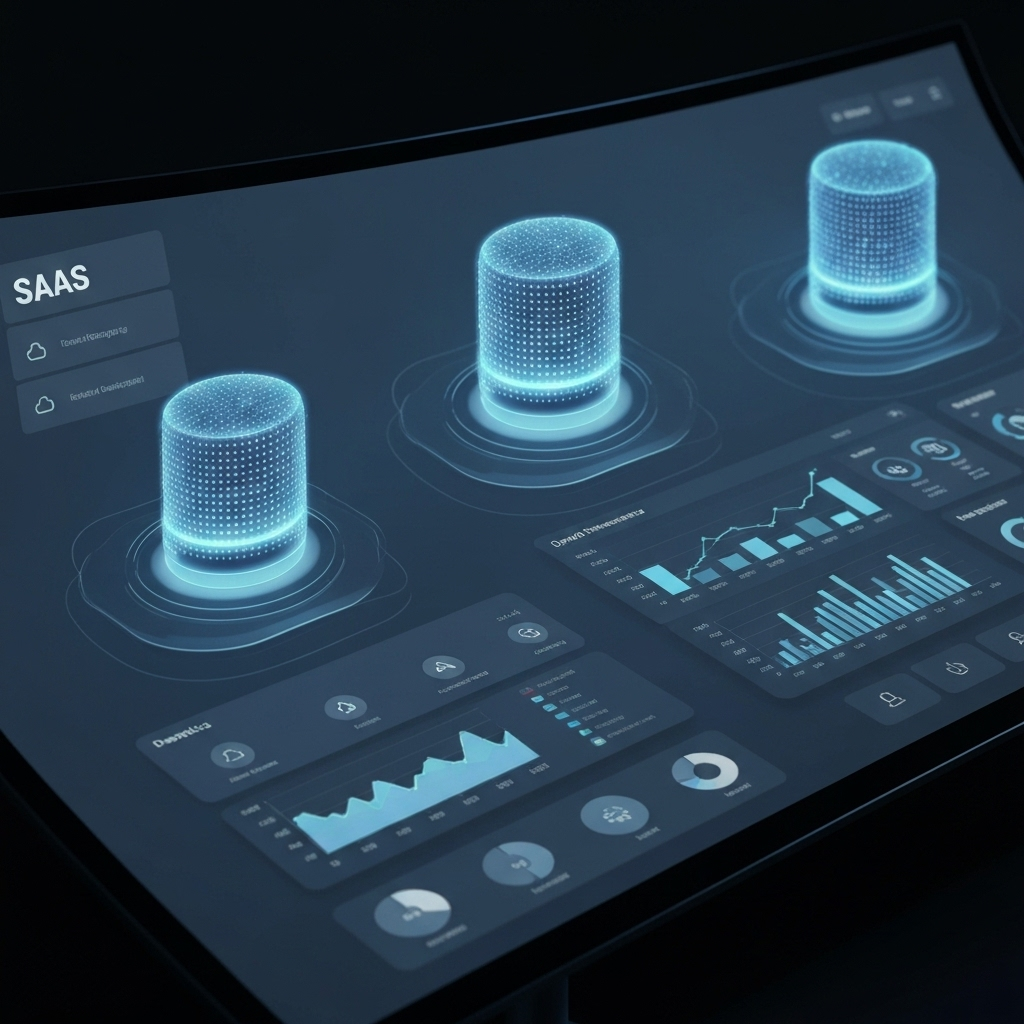Executive Summary
H1 2025 demonstrated a clear shift in U.S. mid-market M&A: declining deal volumes paired with increasing deal values, indicating a preference for larger, strategic transactions. This analysis of SaaS, Industrials/Manufacturing, and Healthcare sectors reveals how macroeconomic factors, regulatory changes, and AI advancement are reshaping valuations. The market is prioritizing quality over quantity, with strategic value creation taking precedence over deal volume metrics.
Introduction
The M&A mid-market ($10 million to $1 billion transactions) serves as a critical economic barometer. H1 2025's contradiction between declining volumes and increasing values suggests dealmakers are pursuing a more deliberate, transformative approach. Mid-market valuations are inherently complex due to private company involvement, making comprehensive analysis essential for understanding current trends and future outlook.
Methodology
This analysis synthesizes data from PwC, Deloitte, Fuld & Company, SaaS Capital, Software Equity Group, and KPMG. The methodology focused on H1 2025 U.S. mid-market M&A trends compared to historical benchmarks, examining deal volume, transaction values, and valuation multiples across three key sectors selected for their significant mid-market activity and distinct market responses.

Software as a Service (SaaS)
SaaS demonstrated exceptional resilience in H1 2025, sustaining robust M&A activity while other sectors moderated.
Valuation Performance
SaaS valuations are primarily assessed using Enterprise Value to Revenue (EV/Revenue) multiples, reflecting their subscription-based business models. The SaaS Capital Index reported a 7.0x median valuation multiple for private companies, with bootstrapped companies at 4.8x and equity-backed at 5.3x. This differential underscores how external investment and growth capital continue to positively influence valuation perceptions among buyers.
Q2 2025 saw average M&A EV/TTM Revenue Multiples reach 6.1x (highest since early 2023), while median multiples held steady at 4.2x. This contrasts with public SaaS companies, which experienced compression, falling to 5.1x from 5.8x year-over-year. This divergence indicates premium pricing for top-tier SaaS companies with strong fundamentals while average performers face increased scrutiny.
Market Activity
Software Equity Group reported a record 637 transactions in Q2 2025, marking the fourth consecutive quarter exceeding 530 deals. This unprecedented activity underscores consistent demand from strategic and sponsor-backed buyers.
Key Drivers
- Growth Efficiency: Buyers prioritize companies with robust growth and capital efficiency
- AI Integration: Accelerating AI adoption drives enterprise software spending and investor confidence
- Vertical SaaS: Industry-specific solutions represented 46% of Q2 activity due to embedded workflows and strong retention
- PE Involvement: Sponsor-backed and venture-invested buyers accounted for 57% of Q2 deals

Industrials/Manufacturing
This sector experienced complex dynamics with moderating volumes but increasing values, indicating a strategic shift toward larger, transformative transactions.
Transaction Dynamics
While deal volume declined modestly in H1 2025, transaction values increased significantly. Q1 2025 saw 76% of deal value from transactions exceeding $1 billion (up from 53% in 2024), demonstrating focus on transformative investments.
Market Drivers
Several critical factors are reshaping M&A activity and valuations in the Industrials/Manufacturing sector:
- Tariff Impact: New U.S. tariffs created cross-border dealmaking friction, resulting in stalled transactions with international exposure and widening bid-ask spreads. This drove notable preference for domestic-focused targets with limited import cost exposure
- Reshoring Initiatives: Geopolitical and supply chain disruptions accelerated reshoring, making U.S.-centric businesses particularly attractive as companies seek enhanced supply chain resilience and reduced dependence on volatile global networks
- Portfolio Optimization: Corporations are actively optimizing portfolios by divesting non-core assets to refocus on high-growth areas and improve operational efficiency
- Technology Integration: Acquisitions increasingly target enhanced productivity, improved operational agility, and advanced technology integration into manufacturing processes
- PE Selectivity: Despite significant available capital, private equity firms exercise increased caution, conducting rigorous analysis of cross-border supply chains and tariff exposures while concentrating activity in resilient sectors with limited tariff exposure
- Long-term Structural Focus: Investors increasingly pursue opportunities aligned with automation, defense, and energy transition sectors, supported by favorable policy and resilience to economic cycles

Healthcare
Healthcare faced a cautious environment with significant headwinds impacting volumes and valuations across multiple sub-segments.
Market Performance
Global health industry M&A volumes and values declined approximately 22% and 25% respectively between H1 2024 and H1 2025. Within this broader trend, Pharma and life sciences saw deal volumes decrease by 19% and values by 33%, largely due to reduced average deal sizes.
Healthcare services presented a contrasting dynamic, with deal volumes declining approximately 25% but values increasing notably by 50%. This suggests a divergence within the healthcare sector, with strategic, higher-value deals continuing in services despite fewer overall transactions. The Americas region experienced the largest declines in both deal volumes and values, while Europe, the Middle East, and Asia gained market share. Notably, hospital M&A volume remained subdued relative to pre-pandemic levels, with only five transactions in Q1 2025, modestly rising to eight in Q2.
Strategic Challenges
The healthcare M&A landscape is being shaped by several converging factors:
- Regulatory and Macroeconomic Headwinds: The sector faces increased complexity from prevailing macroeconomic conditions coupled with significant regulatory shifts, including proposed drug pricing reforms such as Most Favored Nation pricing and potential FDA approval timeline extensions that directly impact valuations and deal modeling assumptions
- Tariff Concerns: Potential new tariffs on imported pharmaceuticals and revocation of duty-free treatment for medical products create uncertainty and affect valuation models
- Strategic Focus: Despite overall declines, larger strategic deals are expected in the $1-10 billion range. Biopharma M&A is driven by need to offset patent cliffs and secure external innovation through targeted "string of pearls" acquisition strategies for early- to mid-stage innovation
- Technology Convergence: Health services technology companies advancing value-based care, digital engagement, or personalized preventive care attract significant M&A interest from institutional and private equity dealmakers
- Cross-Domain Activity: Growing convergence sees technology companies increasingly pursuing healthcare acquisitions in wearables, remote health monitoring, and digital health solutions
- Enhanced Due Diligence: The unpredictable environment necessitates reevaluating M&A strategies with heightened due diligence standards, valuation uncertainty, and risk-adjusted investment returns
Comparative Analysis
Common Themes
Strategic Transaction Focus: All sectors shifted toward fewer, larger, strategic deals prioritizing transformative investments and competitive advantage.
External Impact: Tariffs, geopolitical tensions, and interest rate fluctuations created uncertainty, leading to increased caution and enhanced due diligence.
Technology Catalyst: AI and digital transformation emerged as universal M&A drivers across industries, enhancing productivity and competitive positioning.
PE Selectivity: Private equity remained active but more selective, carefully scrutinizing supply chain exposures and regulatory risks.
Sector Differentiation
Valuation Trajectories: SaaS maintained strong multiples despite public market compression; Industrials experienced tariff-induced gaps favoring domestic targets; Healthcare faced regulatory pressure except in services.
Volume vs. Value: SaaS achieved record volumes with strong multiples; Industrials showed volume moderation with value increases; Healthcare declined in both metrics.
Specific Factors: SaaS benefited from AI tailwinds; Industrials navigated tariff impacts; Healthcare managed regulatory uncertainties.
Conclusion and Outlook
H1 2025 revealed a U.S. mid-market characterized by strategic evolution and selective capital deployment. While volumes moderated, focus on larger strategic transactions drove increased values, reflecting mature market prioritization of transformative value creation.
Key Insights
Strategic M&A remains resilient despite headwinds, with dealmakers prioritizing transactions offering strategic value and long-term structural alignment. External factors significantly influenced deal flow, requiring enhanced due diligence and scenario planning. Technology, particularly AI, emerged as a unifying catalyst driving opportunities while reshaping competitive dynamics.
Forward Outlook
H2 2025 expects continued strategic recalibration with persistent value-over-volume emphasis. Success will require adaptability to policy changes, AI integration capabilities, and supply chain resilience. SaaS should maintain momentum, Industrials will continue strategic adjustments, and Healthcare will navigate regulatory challenges while identifying resilient sub-segment opportunities.
The market has evolved toward a quality-driven approach where success depends on swift adaptation, rigorous analysis, and alignment with transformative economic trends.
Need M&A Advisory Support?
Contact Behar Advisory to discuss how our expertise can support your next transaction.
